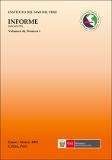Por favor, use este identificador para citar o enlazar este ítem:
https://hdl.handle.net/20.500.12958/3336Registro completo de metadatos
| Campo DC | Valor | Lengua/Idioma |
|---|---|---|
| dc.contributor.author | Lucero Pérez, Stevens | - |
| dc.contributor.author | Muñoz, Roger | - |
| dc.contributor.author | Monroy Rospigliosi, Aldrin | - |
| dc.contributor.author | Quiroz Ruiz, Marco | - |
| dc.contributor.editor | Instituto del Mar del Perú | - |
| dc.date | 2019 | - |
| dc.date.accessioned | 2019-06-17T18:25:24Z | - |
| dc.date.available | 2019-06-17T18:25:24Z | - |
| dc.date.issued | 2019 | - |
| dc.identifier.citation | Inf Inst Mar Perú 46(1), 2019, p. 34-44 | es_ES |
| dc.identifier.isbn | 0378-7702 | - |
| dc.identifier.uri | https://hdl.handle.net/20.500.12958/3336 | - |
| dc.description.abstract | Se efectuaron cuatro monitoreos del recurso L. trabeculata durante los meses de setiembre a diciembre 2011 en el margen noroeste del banco natural Barco Hundido. El crecimiento del diámetro mayor del rizoide (DMR) evidenció que los ejemplares presentarían un tiempo de permanencia en la fase de recluta entre 4 y 5 meses antes de alcanzar la talla de 5 cm (ingreso a la fase juvenil) y de 20 a 21 meses antes de alcanzar la talla de 20 cm (fase adulta). Los esporofitos adultos registraron diferencias mensuales en el crecimiento en del DMR (Λ Wilks = 0,545; F(2;24)= 10,024; P <0,01) disminuyendo sus valores en diciembre (0,091% dia-1; ф’=1,957). Los esporofitos juveniles mostraron diferencias mensuales en el crecimiento en LT (Λ Wilks = 0,864; F(2;52)= 4,089; P <0,05) con valores mínimos en diciembre (0,049% dia-1). El porcentaje de individuos fértiles registró máxima ocurrencia durante los meses de setiembre (adultos 81,40%) y octubre (adultos 88,10%, juveniles 26,76%). | es_ES |
| dc.description.abstract | ABSTRACT: In the period from September to December 2011, four monitoring of the L. trabeculata were carried out on the northwestern margin of the Barco Hundido natural bank. The growth in major diameter of the rhizoid (MDR) showed that the specimens remained in the recruiting stage between 4 and 5 months before reaching the length of 5 cm (entry into the juvenile stage), and from 20 to 21 months before reaching the length of 20 cm (adult stage). Adult sporophytes recorded monthly differences in growth in MDR (Λ Wilks = 0.545, F(2;24)=10.024, P< 0.01) decreasing values in December (0.091% day-1; ф`= 1.957). Juvenile sporophytes showed monthly differences in growth in TL (Λ Wilks = 0.864, F(2;52)= 4.089; P <0.05) with low values in December (0.049% day-1). The percentage of fertile individuals recorded a maximum occurrence during September (adult 81.40%) and October (88.10% adult, 26.76% juvenile stage). | - |
| dc.language.iso | spa | es_ES |
| dc.publisher | Instituto del Mar del Perú | es_ES |
| dc.rights | info:eu-repo/semantics/openAccess | es_ES |
| dc.rights.uri | https://creativecommons.org/licenses/by/4.0/ | es_ES |
| dc.source | Instituto del Mar del Perú - IMARPE | es_ES |
| dc.source.uri | Repositorio Digital IMARPE | es_ES |
| dc.subject | Lessonia trabeculata | es_ES |
| dc.subject | crecimiento vegetativo | es_ES |
| dc.subject | fertilidad | es_ES |
| dc.subject | pérdida de tejido distal | es_ES |
| dc.title | Crecimiento de Lessonia trabeculata Villouta & Santelices, 1986 en el litoral rocoso de Islay, Arequipa - 2011 | es_ES |
| dc.title.alternative | Growth of Lessonia trabeculata Villouta & Santelices, 1986 on the rocky coast of Islay, Arequipa - 2011 | es_ES |
| dc.type | info:eu-repo/semantics/article | es_ES |
| Aparece en las colecciones: | Informe vol. 46(1) 2019 | |
Ficheros en este ítem:
| Fichero | Descripción | Tamaño | Formato | |
|---|---|---|---|---|
| Informe 46-1 Crecimiento de Lessonia ..pdf | 1,7 MB | Adobe PDF |  Visualizar/Abrir |
Este ítem está sujeto a una licencia Creative Commons Licencia Creative Commons

